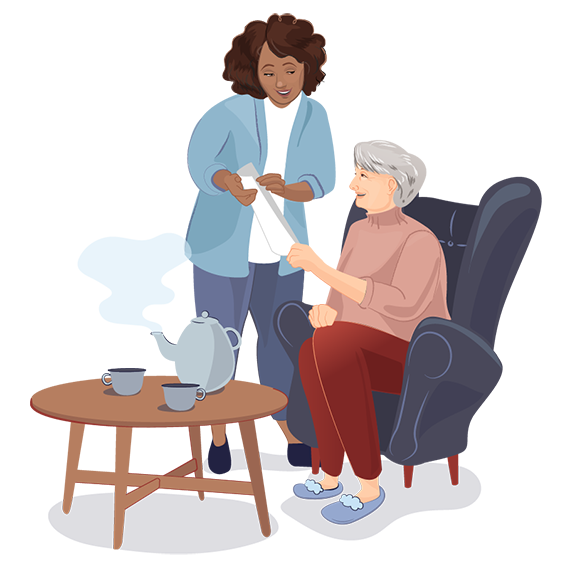
Everything You Need to Know Before Relatives Start Live in Care



Speak to one of our experts
Our friendly experts are here to help from 9am to 7pm, 7 days a week.
Understanding Live In Care: A Comprehensive Introduction
So just what is Live in Care all about? In a nutshell, it’s where a caregiver moves into the home of an elderly or disabled person to provide around-the-clock assistance with daily activities and health needs. It differs from hourly home care, in which a caregiver visits for certain parts of the day and/or night. Live in caregivers offer support that is more continuous and personalised.
The carer’s responsibilities depend on the client’s needs but often include meal preparation, medication reminders, personal care like bathing and dressing, light housekeeping, transportation, and companionship. Caregivers work to promote independence while ensuring safety and comfort.
Live-in care works best for older people who need significant help with daily tasks but wish to remain at home. It allows them to avoid moving into a care facility. Those recovering from surgery or illness also benefit from the transition to being home from hospital.
Debunking Myths: The Reality of Live-In Care
Now let’s put to rest any misconceptions that live-in caregivers simply house-sit or serve as companions. In reality, they are trained professionals adhering to strict standards for senior care or nursing. Reputable agencies do extensive background checks, require certifications, and conduct regular supervisor visits after a placement begins.
While expenses can add up over weeks and months, quality live-in care costs less than facility care. Caregivers become like family, providing personalised support based on interests, routines and needs. Genuine relationships develop between clients and their caregivers.
Key Considerations: Preparing for a Live-In Care Arrangement
The decision to welcome a caregiver into the home is a major one, carrying both emotional weight and logistical preparations. Before taking the decision, our advice is to:
- Consider how the loss of privacy may impact the care recipient or existing family dynamic. Also, factor in financing the substantial costs over an extended duration of care. Thoroughly vet agencies about their processes for vetting, training, and supervising their caregivers.
- Clearly communicate preferences and expectations to the agency regarding meals, medications, schedules and health needs. Recognise that some adjustments are to be expected as the caregiver learns the home’s daily rhythms.
- Maintain open communication with the caregiver and agency to help ease significant transitions. While live-in caregiving brings compromises, matching a compassionate caregiver suited to a senior’s needs can provide quality care and companionship.
The Advantages: Why Choose Live-In Care for Your Loved Ones
The around-the-clock presence of a live-in caregiver enables seniors to enjoy their favourite pastimes and supports them to increase mobility. With supervised assistance available at any hour, many can continue beloved hobbies or social activities that might otherwise carry risk or be inaccessible. The one-on-one relationship fosters mental engagement.
For family members, comfort comes in knowing their elderly relatives have dedicated support. They witness their loved ones receive attentive care while they balance their own job and family responsibilities. Compared to facility visits, they can interact on a more natural day-to-day basis in the family home.
Conclusion: Embracing Live-In Care with Confidence
Considering live-in care for ageing relatives elicits a mix of anticipation and anxiety. While adjustments are required, personal stories show that beneficial relationships develop to sustain the quality of life for seniors and peace of mind for their families.
By dispelling myths and setting clear expectations, live-in care unlocks life-enriching potential.






